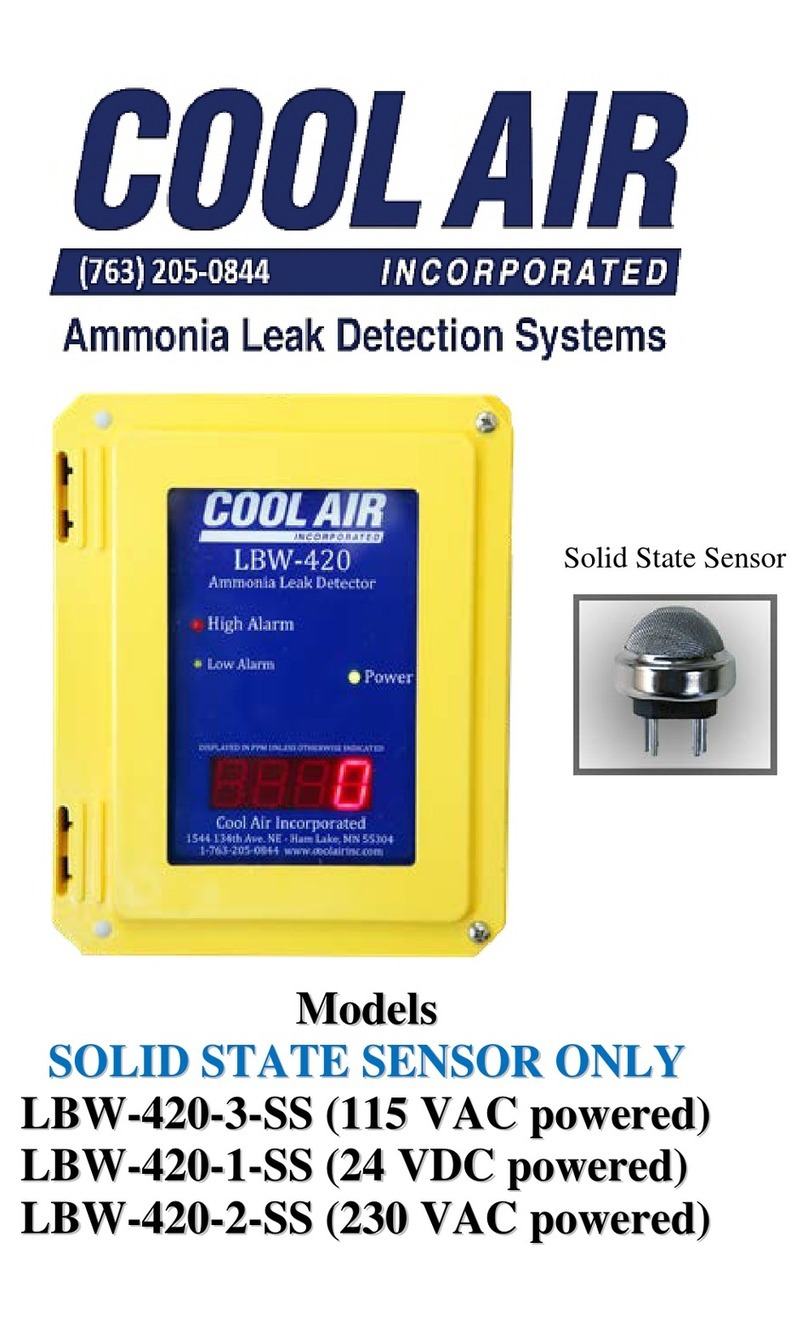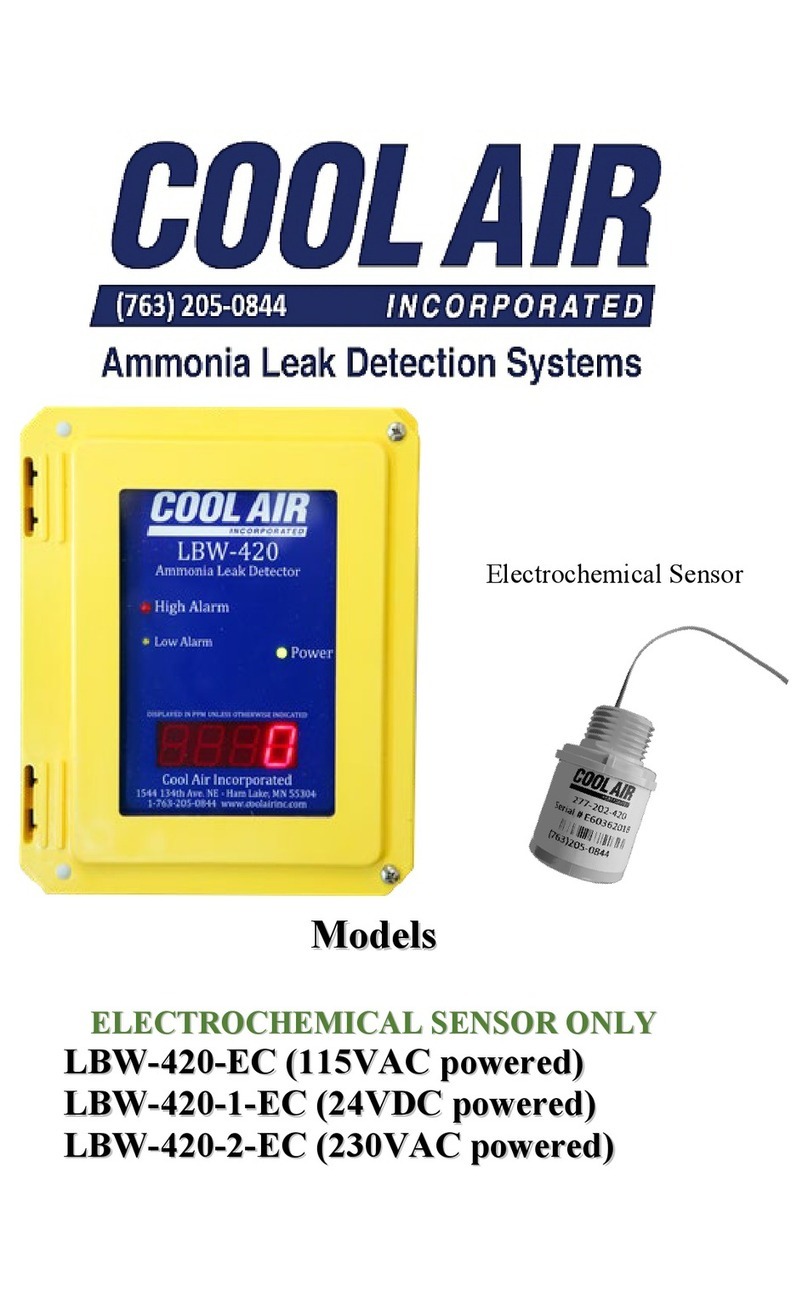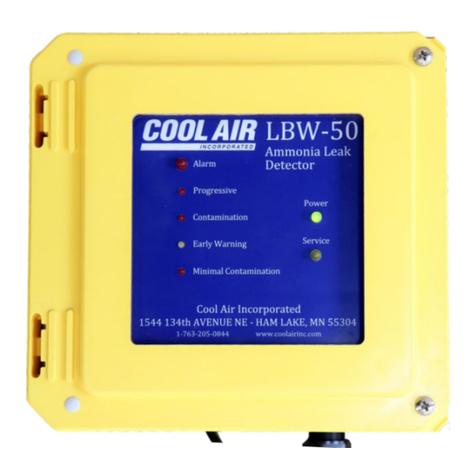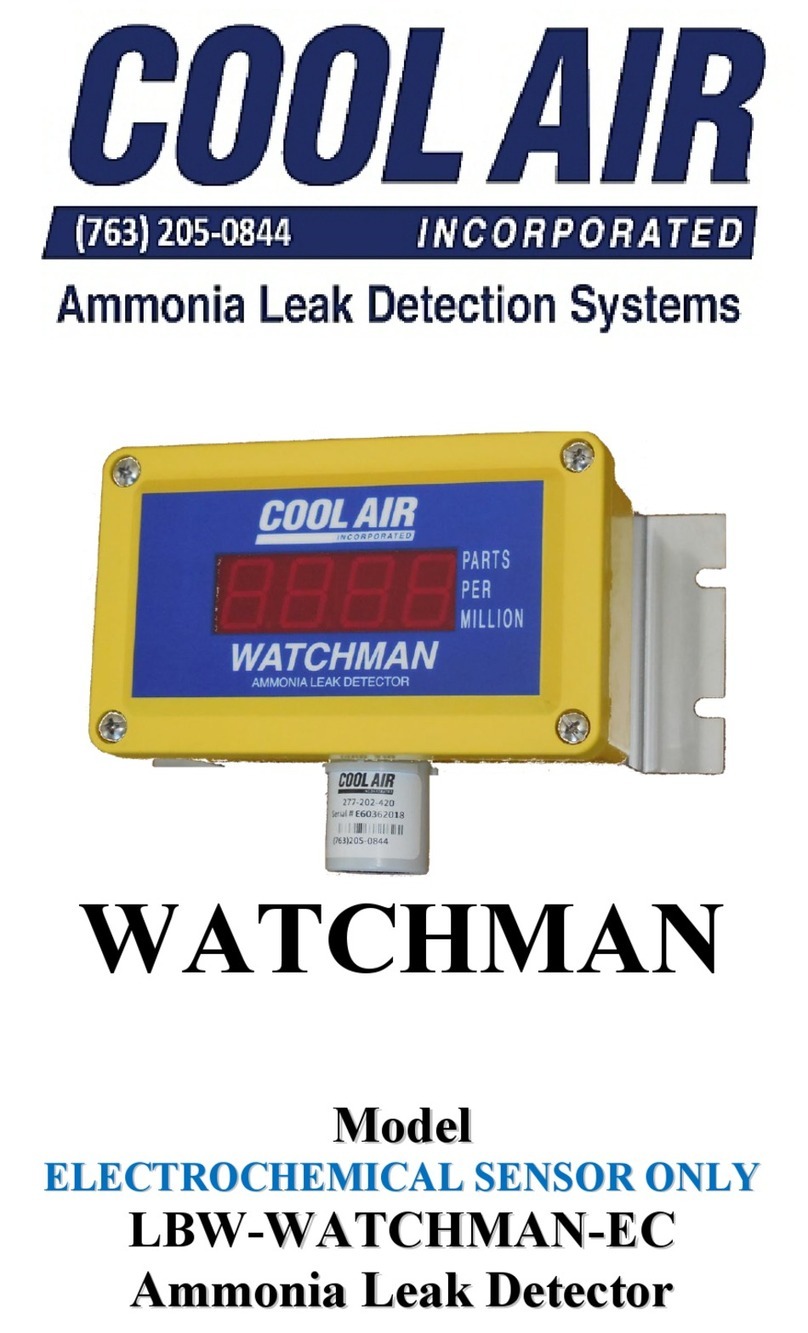
Copyright © 2020 by Cool Air Incorporated. All rights reserved.
PROGRAMMING AND OPERATION ................................................
PROGRAMMING THE AMMONIA HI-ALARM AND LOW ALARM SET
POINTS ...................................................................................................
PROGRAMMING THE 4-20 MARANGE ...................................................
SETTING THE SERVICE MODE TIMEOUT ..............................................
SETTING THE AUXILIARY RELAY PAIRING...........................................
SETTING THE RELAY LATCHING............................................................
RE-SETTING A LATCHED RELAY ...........................................................
SPECIFICATIONS ................................................................................... 2
IMPORTANT—READ THIS FIRST ...................................................... 3
CAUTIONS ................................................................................................ 3
INTRODUCTION ..................................................................................... 3
STANDARD FEATURES ......................................................................... 4
PARTS DESCRIPTION............................................................................ 5
FRONT PANEL DISPLAY .......................................................................... 5
AMMONIA SENSOR .................................................................................. 6
FRONT PANEL-MOUNTED CIRCUIT BOARD ........................................... 6
SERVICE SWITCH (SERVICE MODE) ....................................................... 7
THE “ENTER”, “UP”, AND “DOWN” PUSHBUTTONS................................. 7
ROTARY SELECTOR SWITCH .................................................................. 7
ENCLOSURE-MOUNTED CIRCUIT BOARD............................................. 10
POWER (LBW-420) ............................................................................... 10
JUMPER J3, AMMONIA SIGNAL (LBW-420-1 ONLY)............................. 10
RELAYS.................................................................................................. 11
RELAY STATUS LEDS............................................................................ 11
EXTERNAL CONNECTIONS .................................................................... 11
4–20 MAANALOG OUTPUT ................................................................... 12
INSTALLATION AND SETUP ............................................................. 15
TABLE OF CONTENTS






























